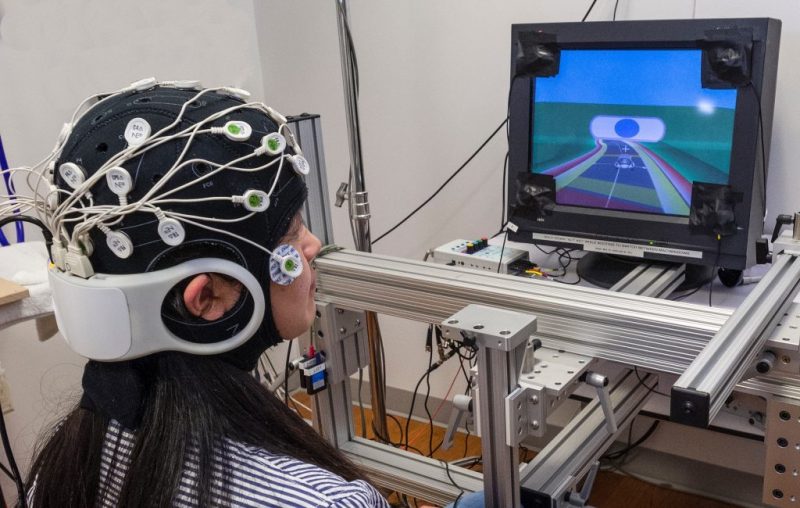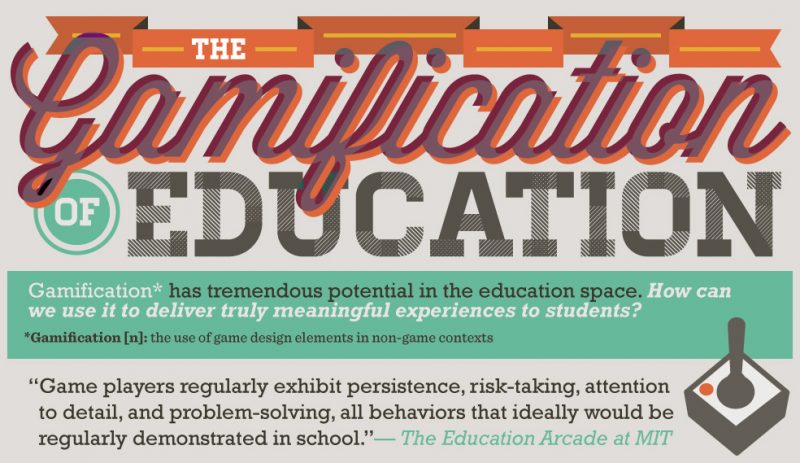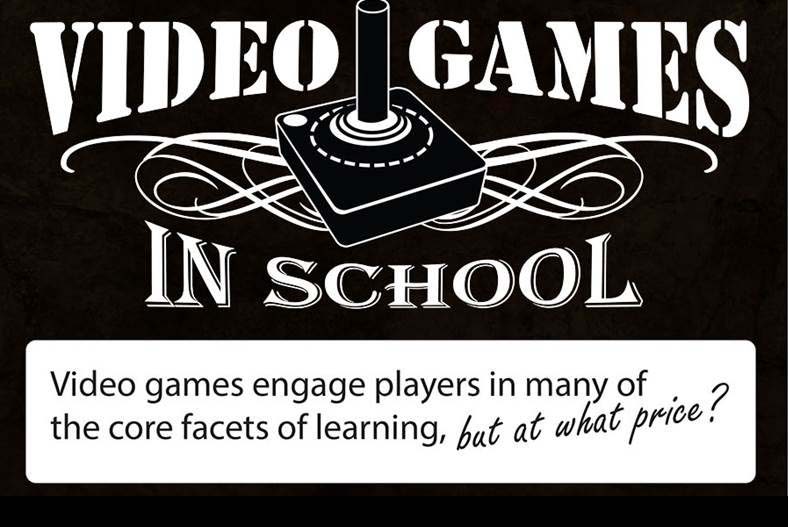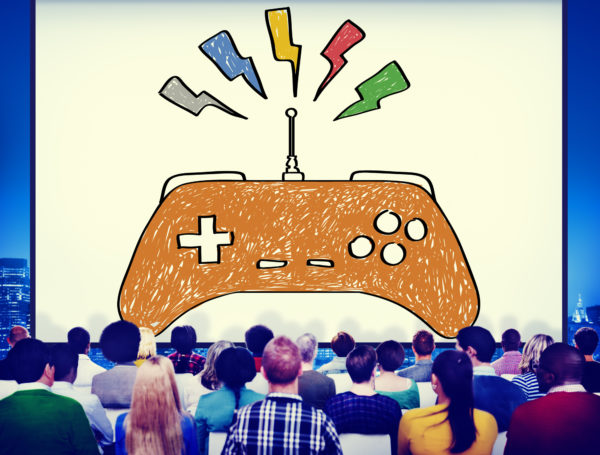To draw a parallel between video gaming and education may cause the more traditional educators to balk at the thought, but recent developments in the field of video game research reveal dramatic correlations between playing video games and the ability to learn.
1.2 billion people play video games worldwide. This is a rather significant portion of the population and if we ignore the negative consequences for the moment, which include addictive qualities and deprioritizing of school work, we can delve into the beneficial correlations between gaming and education.
Studies have revealed that students find gaming and gamification of work positively stimulating and motivating. Online games in particular encourage multitasking and instantaneous decision making, which helps students learn to better manage unanticipated events and above all inspires creativity.
It is also proven that video games enhance the frontal lobe cognitive functioning of the brain, which not only promotes multitasking ability and enhanced learning, but can slow the onset of age related cognitive decline and Alzheimer’s.
The Neuroscience Behind Video Games and Learning

To understand the application of video games in education, it is important to understand how video games affect the brain and how to harness these properties.
Recent studies have elucidated, through magnetic resonance imaging (MRI), the fact that video gaming can stimulate neurogenesis and connectivity in the brain. This was demonstrated as an increase of the quantity of grey matter in the brain, specifically the right hippocampus, right prefrontal cortex and cerebellum. These particular regions are associated with spatial navigation, memory, strategic planning and fine motor control. The increase in connectivity between these regions is linked to higher intelligence and consciousness.
There was a particular correlation between the extent of the changes and the passion a gamer felt playing that specific video game. The playing of video games improves cognitive function and performance by combining the higher cognitive function of the cerebrum with the muscle memory housed in the cerebellum providing a platform for enhanced learning capabilities. [2]
Video games are designed to capitalize on the brain’s innate reward system by exploiting the dopaminergic pathway. The neurotransmitter Dopamine, is released from one end of a nerve fiber and diffuses across the synapse enabling the transfer of the nerve impulse.
Dopamine is associated with the limbic region of the brain which controls the pleasure response and it is this response that stimulates repeating the action that motivated the response in the first place. It is this pathway that has positively linked video games with addiction citing the fact that these receptors are susceptible to sensitization and thus require increasingly more dopamine (and video game playing) to produce the same pleasure response. [3] If we overlook this adverse connotation for the moment, educators can actually utilize this phenomenon as a positive reinforcement method for augmenting studies.
Simone Kuhn, a researcher in the trial, stated:
While previous studies have shown differences in brain structure of video gamers, the present study can demonstrate the direct causal link between video gaming and a volumetric brain increase. This proves that specific brain regions can be trained by means of video games.
There have been studies conducted with mental health patients predicting that video games could be therapeutic in the treatment of schizophrenia, post-traumatic stress disorder and Alzheimer’s disease. [2]
In another study, researchers created a specialized video game to help elderly subjects improve mental skills such as multitasking, revealing brain activity pattern changes as these changes took effect.
The study paradigm includes participants from 20 – 70 years old and subsequently confirmed that multitasking skills deteriorated with age. Subsequently, the older participants, aged 60 – 85 underwent a four week training program with the game.
After the time period, the elderly subjects exceeded every untrained 20 year old’s scores, and this cognitive enhancement remained in place 6 months after the study without any further training. The neurological battery of tests included those for working memory and sustained attention was also improved in the subjects after the training period. [1]
This can be easily adapted to fit into the school and college curriculum to enhance the cognitive faculties of students, and this has specific important for those with cognitive function disorders such as attention deficit disorders.
Many of these programs incorporate the model of play. From the first stages of life, this activity is important for the physical and psychological development of an individual. By activating the reward system of the brain, “play” reinforces life affirming behavior in an attempt to promote behavior that results in life sustaining choices. T
his can be reasonably applied to the learning context, as the playing of video games stimulates these very pathways and results in the highly engaged state which is conducive to learning and acquiring new skills. [6]
(Next page: The applications of gaming technology)
The Applications of this Technology

Adam Gazzaley, director of the Neuroscience Imaging Center and co-founder of Alkali Interactive Labs, has focused his research on the development of effective approaches to enhance cognitive abilities in both healthy and impaired individuals. He indicates that the current treatment protocol for mild cognitive impairment is somewhat deficient and proposes that the approach should “be targeted, personalized, multi-modal, and closed-loop” to ensure effectiveness.
Subsequently, Gazzaley noted that video games can serve as potent interactive tools to promote cognitive enhancement. His company is working to get video games evaluated through the Food and Drug Administration (FDA) as diagnostic and therapeutic tools for treating attention deficit disorder, depression, traumatic brain injury, Alzheimer’s disease and autism. [5]
Furthermore, a grant from the Bill & Melinda Gates Foundation has commissioned the design and testing of two educational games to help eighth graders develop beneficial social and emotional skills through gaming that emphasizes kindness and compassion, instead of the expected violence and aggression. This is being researched in the hope to capitalize on the time most middle class children spend on a smartphone or device for constructive purposes, as opposed to the time wasting most parents deem “screen time” as. [2]
With the increasing evidence that intensive use of video games (more than nine hours per week) results in significant enhancements in cognitive function, it should be noted that in school age children, there is an inverse correlation with academic achievement in spite of cognitive development. This is arguably due to increased time spent playing video games instead of doing curriculum based activities. [6]
Mariano Sigman of the University of Buenos Aires coordinated an initiative which comprised a series of brain training games for school going children from low socioeconomic groups. The games were developed to train different aspects of executive function, such as capacity planning, working memory and inhibitory behavior in order to regulate through patterns and behavior.
The results revealed that the games improved the cognitive function which subsequently improved academic performance at school, in addition to a significant increase in brain tissue in the ventral striatal circuit and dorsolateral prefrontal cortex, the decision making region. [6]
This research has actually been applied in a real educational framework, and thus represents a revolutionary effort in educational tools that have cognitive benefits to be used universally within the education system.
These games not only have effects on cognitive function, but promote social and emotional development in addition. A recent study revealed that when students were required to play a certain video game revolving around building mathematics skills and problem solving with each other, as opposed to playing alone, they exhibited a “mastery mindset” that is exceedingly conducive to learning.
Furthermore, the students reported a higher level of enjoyment and interest when playing in groups. [5]
Research also suggests that video games encourage and motivate students to learn less popular subjects, such as mathematics, by providing the content in a much more fun and interesting way. [5]
If video games are implemented appropriately, they have the potential to provide a robust basis for critical thinking and project-based learning. Video games are designed to garner the skills indispensable for navigating the multifaceted, interconnected and ever changing contemporary world. Digital literacy and understanding is a prerequisite of life currently, and will only become more important as the world moves further into the technological revolution.
As an assessment tool, video games provide educators will instantaneous feedback regarding their students and determine how well as student understands the material covering the foundation of the games. This allows teachers to make changes or customize games and methods for each student on an ongoing basis and provide personalized education, where with traditional teaching methods and standardized testing there is no margin for modification.
(Next page: Gamification and drawbacks)
The Gamification of Education

This is an offshoot of the studies into the effects of video games on the brain and involves adapting the current curricula to utilize the neuroscientific attraction that video games pose, to engage students in a way that current teaching methods do not.
In our contemporary society, it is seemingly impossible to engage students these days as traditional education is in direct competition with over-stimulatory screen time by way of television, smart phones and tablets. These technologies are effectively changing the way our children think and compute and hence the education system should change with it.
Teachers are increasingly utilizing tools such as video games to deliver lessons such as mathematics, reading and computer literacy in a format that holds their students’ interest. Many grasp the concept of gamification of education as the future of education and providing a more active platform to engage students and develop the technological skills that they will need to succeed in the modern world. [8]
Gamification utilizes the cognitive engagement that gamers experience to apply these concepts to an educational context to facilitate learning and influence student behavior. This involves incorporating certain elements of motivation to engage students. These include:
- Narrative
- Immediate feedback
- Fun
- “Scaffolded learning” with incrementally increasing challenges
- Mastery (for example, in the form of levelling up)
- Progress indicators (for example, through points/badges/leaderboards, also called PBLs)
- Social connection
- Player control
A combination of these elements promotes the success of gamification and results in an engaged and subsequently educated student.
As with all things, there is the proviso that each child learns differently and this needs to be taken into consideration and the unique needs of students addressed effectively. [7]
There are many conceivable benefits of this education tool, including the fact that students feel ownership over their learning and thus feel a sense of responsibility and accountability which are motivating factors.
The less rigid atmosphere with regard to failure also inspires certain individuals, especially those with problems with failure, to keep trying. Visible motivators such as progress indicators are encouraging and allowing students to explore their creativity through various characters and roles inspires a more fun approach and hence a greater cross section of participation than what a teacher would usually receive under normal circumstances.
Students who typically regard themselves as poor students and do not want to be perceived as “nerds” typically excel at this type of learning. Surveillance by teachers reported that it was the children at the lower end of the academic performance spectrum that benefited most from these games. [7]
The gamification of education can be used to adapt grading format, change the classroom dynamic, as well as changing the structure of the class. For example, a student might be requested to “embark on a quest” instead of just completing an assignment and groups may be referred to as “guilds” to reinforce the narrative of the lesson. This has proven to be a strong motivator.
Examples of successful implementation of this mode of practice include Quest to Learn (Q2L) which was a gamified curriculum offered to sixth graders of a New York public school. In science class, for instance, students were tasked to help a shrunken scientist navigate the human body successfully. [7]
Another excellent example of an application of this theory is Minecraft. This is a game in particular where the possibilities are infinite, it encourages creative exploration and teachers can subsequently plan lessons around a theme and allow the students to create worlds around a specific historical event for example.
This virtual learning lab can allow children to excel at the mathematical and physical science skills it challenges them with, as well as fostering collaboration with other students. There is even a Minecraft Education Edition development specifically for schools for this exact prospect and is designed to integrate into the curriculum.
The Shortcomings of Video Games in Education

There is research regarding the role of video games in improvement of classroom performance and academic achievement, but not enough of it. Further research is necessary to prove whether there is indeed a positive correlation between video games and heightened academic accomplishment.
The parallels we have drawn between improved cognitive skills and video games, although we can logically extrapolate that improved cognitive skills will translate to classroom achievement, can only suggest at the academic developments we seek. [8]
It’s widely known that video games can be expensive making them out of reach for those full classrooms with tight budgets. Video games require expensive equipment and specialized technology as well as internet connectivity. From a human resource perspective, personnel would require specific training which can all cost more than most schools can afford.
There are factions who dispute the relevance of video games to everyday life, stipulating that they are just illusions and do not relate to real life situations and thus skills acquired as a result of video games cannot be inferred and are meaningless.
But counter arguments cite research that demonstrates precisely the opposite. The disadvantage here is therefore the mixed reports on the relevance of video games.
Furthermore, the oversimplification of complex emotional, social and political systems within the game is criticized as objectors state that life cannot logically correspond with the simple reasoning of the video game. Additionally, the lack of context and consequence in real life may have negative implications for the players as they do not have a “reset” button in everyday life.
There are various ethical and social implications of using video games as educational tools. If we accept the research that video games are indeed effective in changing neural processes, then we have to consider that they may alter these processes in unintended ways.
People react to video games in different ways depending on a host of variables, including the type of game, the target population and the desired outcome of the game. Although the evidence suggests that the games designed for educational purposes are effective, many of the trials conducted lack consistency, noted Martha Farah, Annenberg Professor of Natural Sciences and director of the Center for Cognitive Neuroscience and Society at the University of Pennsylvania, and real world replication remains an unknown with methodologically flawed studies.
Farah also adds controversy to the field by stating that some leading researchers have conflicts of interest as they have aspirations of commercialization once positive results are found.
Due to the ability of video games to alter neural processes, transparency on the part of game designers regarding the game’s function and proposed effect needs to be apparent. [5]
As previously mentioned, certain design features of video games promote addiction in susceptible individuals. The games are designed to present challenges, but not too challenging to deter gamers as well as offer rewards for task completion. The psycho-physiological mechanisms underlying video game addiction are mainly stress-coping mechanisms, emotional reactions, sensitization and reward and long term gaming may lead to endogenous changes in the reward system of the brain.
This increased release of dopamine is the brain’s reward response to achievement of a challenge working as a positive reinforcement for good behaviour, choices or actions, thus the brain wants to repeat those actions and receive more dopamine induced pleasure. This feedback loop is what causes gamers to continuously play video games wherein virtual challenges accomplished result in the self-same release of dopamine which stimulates the brain’s pleasure response, which in turn results in an increase in gaming to maintain that feeling and resultant compulsive, addictive gaming. [5]
Conclusion
In the final analysis, although we can definitely see the niche in the educational system for a tool such as this, the education system needs to take into account the types of games they are exposing our children to.
The observations in brain mechanics that we see with concentrated video game use proves how experience modulates brain development. This, perhaps, should give us pause when considering the use of violent video games and the effect they can have on developing brains.
The use of video games, typically in early adolescence, is a highly debated topic with one sector promoting its use due to its cognitive enhancing properties, whilst the other component supporting the hypothesis that early exposure to video games increases aggressive behavior and desensitization to violence.
From an exclusively educational perspective, video games inspire improved participation and experiential learning, which they offer through engagement and exploration, enriching social and emotional well-being whilst providing cognitive benefits.
In spite of this, video games cannot be treated as a panacea for the failings of the traditional education system. If anything, they present a valuable supplementary tool to be used in conjunction with current methods. Video games cannot replace teachers and resources but do have merit with students that do not respond well to traditional teaching methods. [8]
Approximately 60 percent of educators are now utilizing digital games on a weekly basis to aid teaching, with 18 percent using them daily according to a 2017 nationwide survey.
In addition, teachers reported using video games weekly to evaluate student progress and level of understanding. These survey findings have sparked an interest is the use of video games as an educational tool and has instigated the consideration for legislating a pilot program for interactive learning games in schools. [9]
This forward-thinking approach is the very catalyst that this educational approach needs in order to cement or reject its place in education.
Further research is essential and as Douglas Clark, Professor of the Learning Sciences and Science Education at Vanderbilt University states, the research needs to be refined to investigate exactly which aspects and design of video games function best at improving the learning abilities of students.
References
- Abbot, A (2013), Gaming improves multitasking skills, Journal of Nature Vol 501 (7465), McMillan
- Bergland, C (2013), Video Gaming Can Increase Brain Size and Connectivity, Psychology Today, Sussex Publishers
- Cutter, A, Michael F. Young, Stephen Slota, , Gerard Jalette, Greg Mullin, Benedict Lai, Zeus Simeoni, Matthew Tran, and Mariya (2012). Our princess is in another castle: A review of trends in serious gaming. Review of Educational Research, 82(1), 61–89.
- Ganong (2010): Review of Medical Physiology, 23rd Edition, McGraw Hill, USA
- National Academic Press (2015), The Neuroscience of Gaming. Workshop in Brief, Institute of Medicine, Washington (DC)
- Novotnev, A (2015), Gaming to learn, American Psychological Institution, Vol 46, no. 4
- Malone, T. W. (1981). What makes things fun to learn? A study of intrinsically motivating computer games.Pipeline, 6(2), 50
- Malykhina, E (2014), Fact or Fiction? Video Games Are the Future of Education, Scientific American, Nature America
- Survey Report (2017), Digital Game Use: Teachers in the Classroom, University of Michigan
[Editor’s note: This post originally published on The Gizmo Life.]
- 4 ways to encourage play in education - April 25, 2024
- CoSN IT Leader Spotlight: Lisa Higgins - April 25, 2024
- It’s time to pay student teachers - April 25, 2024


